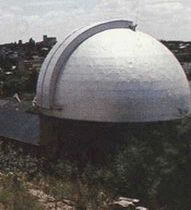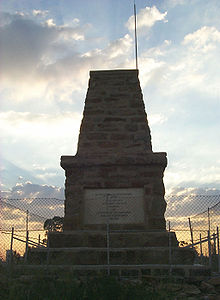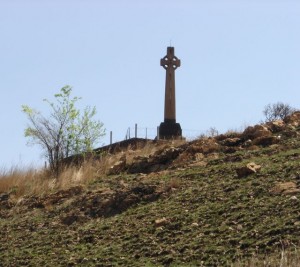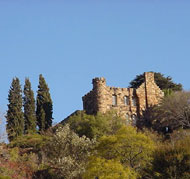One of the older inner suburbs in Johannesburg, Bertrams is surrounded by Highlands and Troyeville to the north and south respectively, and New Doornfontein and Lorentzville to the west and east respectively. Robertson Fuller Bertram (born in Queenstown in 1865) came to the Witwatersrand in 1886 and was the most active among the promoters of this township, which bears his name. It was laid out in 1889 on a portion of the farm Doornfontein. Morkel & Du Toit auctioned stands on 16 August 1889.
In the earlier records the name appears as Bertram Township. Bertram’s Town, Bertrams Township, and even Bertramsville. Bertrams Road appears on the early plans of the township and was named by the township-owner, after his own surname. The choice of the names Fuller Park and Fuller Street is also obvious. On 15 June 1897, the Sanitary Committee learnt that Bertramsville wished to come under the jurisdiction of Johannesburg. In 1898, it was noted in the Staats-Almanak voor de Zuid-Afrikaansche Republiek that Bertramsville consisted of 350 stands of varying sizes and that the area was particularly suited to gardens and trees. Mention was made of a specific property comprising of stables for thoroughbred horses and exceptionally fine buildings.
Bertrams was originally conceived as a middle-class suburb, adjoining Old Doornfontein, the favourite residential area of the wealthy who were also the leaders of society. This is borne out inter alia, by the extant terrace houses (also called pepperpot houses) in Queen and Ascot Streets.
These houses together with the housesfacing onto Gordon Road, was designed by the architect H.I. Bertson for Mr F.J. Chapman, and are quite exceptional in their impact, style and scale.
A few of the many interesting persons who are reputed to have stayed in Bertrams, albeit for a short while, is the Founder of the Boy Scout Movement, Lord Baden-Powell, the British imperialist Cecil John Rhodes (21 Berea Road), the murderess Daisy de Melcker (67 Terrace Road), and former President of the Transvaal Rugby Union, Mnr H.J. Sanderson (18 Gordon Road).
The Northern parts of the precinct have important anchor institutions located within it, such as The Gerald Fitzpatrick Home for the Aged, Gordonia Mental Health Institute and Social Services at the bowls club. These institutions have many community outreach programs that play a critical role to the Bertrams residents.
The high cultural diversity in the precinct is a strong asset which contributes to social cohesion.
Article Credit/References
.
Observatory is a Suburb in Johannesburg’s east; it borders the suburbs of Cyrildene, Linksfield, and De Wet’s Hof.
It is named for the Union Observatory established in the early 1900’s (today’s Johannesburg Observatory).
Popularly known as Johannesburg or Union Observatory 1903 – 1971. The name of the Observatory changed three times, reflecting the political changes in South Africa during its existence. The Observatory closed down. In the late 1960s, an amalgamation of astronomical facilities in South Africa took place in order to form the current S.A.A.O. Some of the instruments were moved to Sutherland in the Karoo.

Location: The buildings still exist. Address: 18a Gill Street, Observatory, Johannesburg
It is also the site of Observatory Ridge, the city’s highest point. Observatory Ridge is the highest point in Johannesburg, South Africa. It is 2,208 meters above sea level.
There is a large sandstone monument on top of the ridge that commemorates the British Indian Army.
 The monument bears the inscription: “To the memory of British Officers, Natives, NCOs and Men, Veterinary Assistants, Nalbands, and Followers of the Indian Army”.
The monument bears the inscription: “To the memory of British Officers, Natives, NCOs and Men, Veterinary Assistants, Nalbands, and Followers of the Indian Army”.
It is a well established suburb: Observatory Girls’ Primary was founded in 1918, and Observatory Golf Course (1912) is the oldest golf club in Johannesburg still operating from its original ground. The suburb also houses the Yeshivah Gedolah of Johannesburg.
Article Credit/References
Kensington is a hilly suburb of Johannesburg, South Africa.
It was established in 1897 by Max Langermann (after whom the thoroughfare Langermann Drive is named). It is bounded to the west by the suburb of Troyeville, to the east by Bedfordview and the north by Bruma and Cyrildene.
Kensington is laid out over the slopes of several koppies (flat-topped, high-sided hills). The streets were laid out in 1902, and were heavily planted with trees, which give the area a distinctive, wooded appearance. Notable features of the suburb include Rhodes Park, named after Cecil Rhodes; Jeppe High School for Boys, Jeppe High School for Girls, and Kensington Castle.
 One of the city’s most impressive castles is in Kensington. Constructed in 1911, it has 10 rooms on four levels and is perched on the hill opposite Langermann’s Kop, in Highland Road.
One of the city’s most impressive castles is in Kensington. Constructed in 1911, it has 10 rooms on four levels and is perched on the hill opposite Langermann’s Kop, in Highland Road.

It was constructed with stone taken from the southern edge of the koppie on which it stands.
It was built by Englishman Samuel Scott Wilson for his wife Kate MacKirdie, who agreed to marry him on condition that he build her a castle.
On arrival in Johannesburg, Wilson started immediately on the castle, and the couple moved in in 1911.
Article Credit/References
Bellevue is a suburb of Yeoville. Yeoville was proclaimed as a suburb in 1890 (four years after the discovery of gold led to the founding of Johannesburg) by Thomas Yeo Sherwell, who came from Yeovil in the United Kingdom. The area was advertised as a ‘sanitarium for the rich’ in which the air was purer because it was up on a ridge overlooking the dirty, smoke-filled mining town that had sprung from nothing out of the (then) Transvaal bushveld. However, the rich did not buy into the suburb. Instead it became a multiclass area, one to which many poorer people living below the ridge in Doornfontein aspired. It was also a place which attracted many of the waves of migrants from abroad that came to South Africa seeking a new life.
Over the years Bellevue, also attracted its fair share of artists, musicians, students and political activists. However, it was in the late 1970s that a process began which would change the nature of the suburb forever. The establishment of a small, discreet club by a well-known music producer called Patric van Blerk resulted in the main business street through the two suburbs, named Raleigh St in Yeoville and Rockey St in Bellevue, becoming the bohemian cultural centre of South Africa, with a number of night spots and restaurants moving from nearby Hillbrow, till then the night-time entertainment mecca of Johannesburg. Within two years, the high street was transformed from a quiet community street serving the local residents to an internationally-known cultural centre with restaurants, jazz bars, bookshops, arts and crafts outlets, trendy clothing outlets and record shops. On the down side, drug dealers and a criminal element also moved into the area, taking advantage of the opportunities arising out of the almost 24 hour buzz of activity in the street.
In the 1980’s Rockey St (always mistakenly located in people’s minds in Yeoville while it was actually in Bellevue) and indeed the entire area, became something of a liberated zone as black and white met and ate and listened to music together in defiance of prevailing apartheid laws.
The end of apartheid had a profound impact on Yeoville and Bellevue. In the early 1990s, Rockey Street remained a hotbed of radicals, activists, artists and musicians. Journalists from around the world lived and worked there during the transition, and places like the Harbour Cafe, Coffee Society, Tandoor and many others attracted large numbers of visitors.
However, in the hiatus period between 1990 and 1994, as South Africa’s political opponents went through alternating bouts of negotiation and confrontation, and after 1994, urban management went into decline. Added to this, there began a dramatic demographic shift, with the population of Yeoville changing from 85% white in 1990 to 90% black in 1998. The flight of whites out of the area in some ways gave the lie to the apparently liberated nature of the area in the 1980s. While seemingly non-racial in that period, the area was still definitely under the ‘control’ of the white population. But after 1990, many realized that that control was gone and the period of white flight began. The trendy types moved to newly-emerging night spots like Melville, while the majority of the Jewish population moved north to Sydenham and Glenhazel.
In the 2000’s the area is once again a community of migrants, mostly economic migrants from all over the country and the rest of Africa. It is a vibrant, colorful, often chaotic pan-African area.
(Due to space constraints, the above article is an abbreviated extract of the article referenced below. To read the entire history, please click on the link below)
Article Credit/References
Troyeville was founded as the gold rush happened and people tried to build homes and churches away from the centre of mining.
The oldest Baptist church in South Africa is in Troyeville dating from 1897 when it was started by missionaries.
On the 10 August 1889, 612 stands went on sale. It was the only Township started by Hollanders (Van Boeschten & Lorentz) hence all the Dutch street names. It was laid out in June 1891 and named after Gustav Arthur Troye. He was born in Germany in 1860 and came to South Africa when he was 17 and eventually qualified as a surveyor.
Past tenants range from pacifist, Mahatma Ghandi in the early 1900’s to assassinated anti-apartheid activist David Webster.
Article credits /references:
https://en.wikipedia.org/wiki/Troyeville
https://johannesburg1912.wordpress.com/2014/05/02/troyeville/



